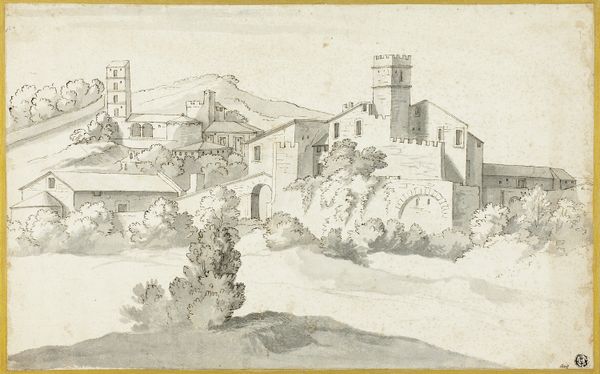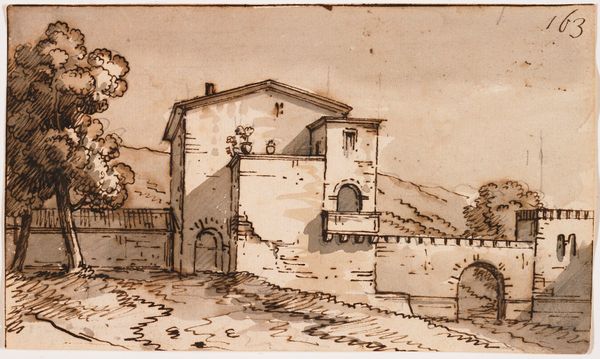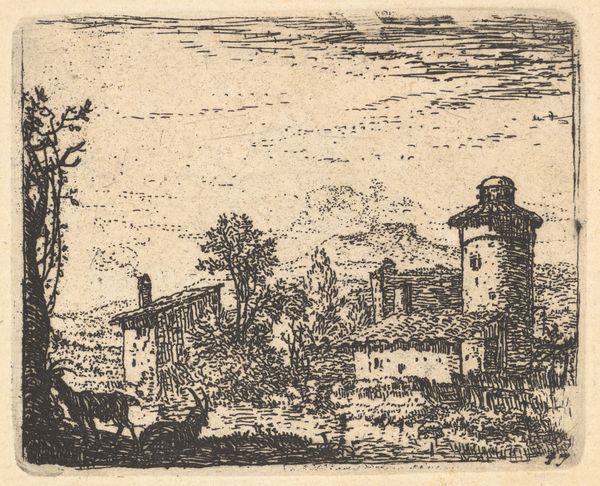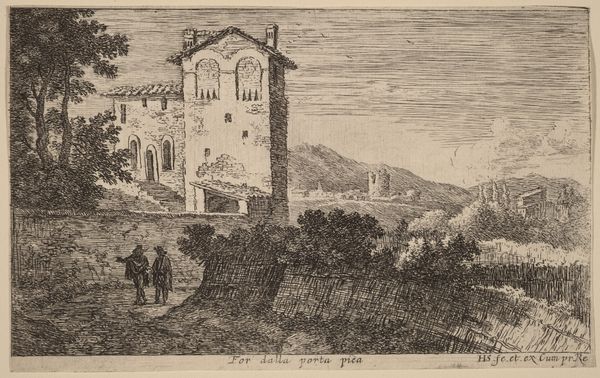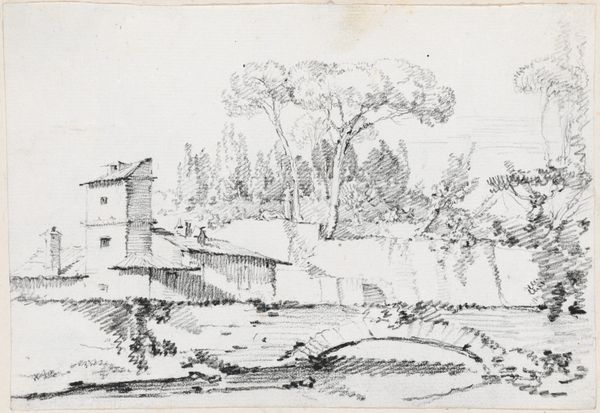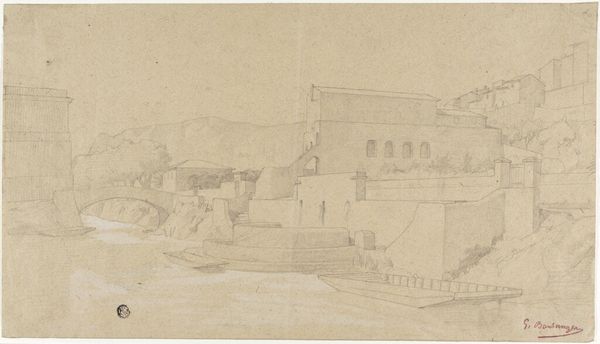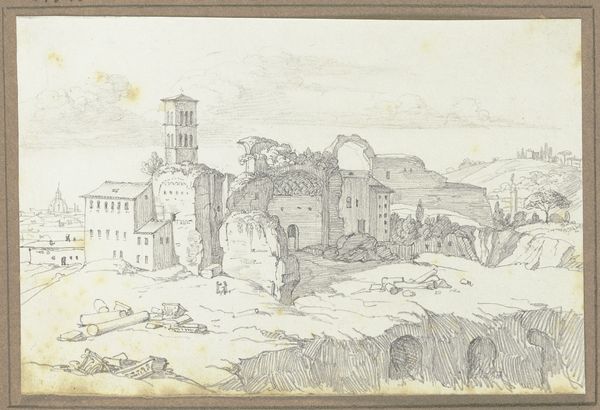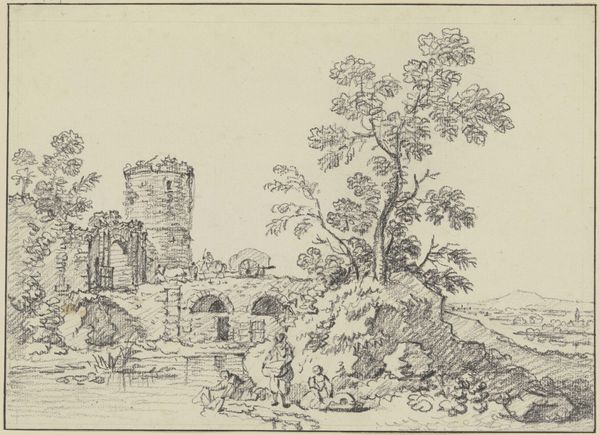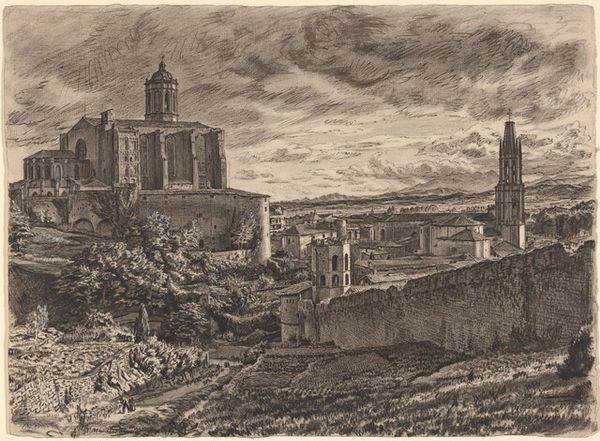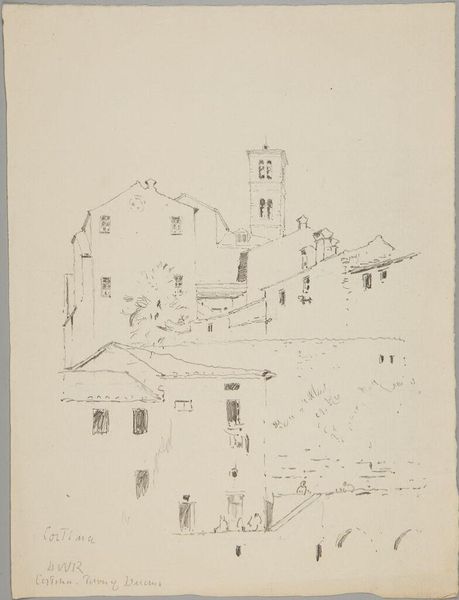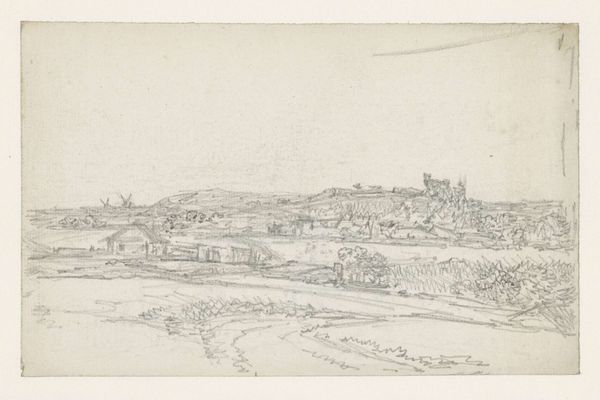
drawing, print, pen
#
drawing
#
comic strip sketch
#
mechanical pen drawing
# print
#
pen illustration
#
landscape
#
personal sketchbook
#
linework heavy
#
sketchwork
#
geometric
#
pen-ink sketch
#
pen work
#
sketchbook drawing
#
pen
#
storyboard and sketchbook work
Copyright: National Gallery of Art: CC0 1.0
Editor: Here we have Tomás Joseph Harris' "Landscape with Farmstead," created with pen, and it reminds me of a quick sketch from a travel journal. There's something about the immediacy of the linework that feels very personal and evocative. How do you interpret this work? Curator: The rapid, almost frantic linework invites us to consider Harris's engagement with the landscape, and its potential socio-political implications. Where was this farmstead? What communities lived there? These aren’t passive scenes; they exist within systems of power and land ownership, historically fraught with conflict. The dilapidated appearance may imply socio-economic disparity. What is this saying about class structures of the time, who profits and who loses? Editor: That’s interesting. I was so focused on the visual aesthetic. Curator: Exactly! Consider the absence of human figures. Is that a deliberate statement about their relationship to the land, or a commentary on the visibility – or invisibility – of certain groups within the prevailing social narratives? Editor: So you’re saying this simple landscape can actually be read as a social critique? Curator: It invites that reading. How does it make you feel, now thinking about the power structures that might be in play? Editor: It makes me wonder about the people who called that place home. There’s a story there that the sketch isn't directly telling. I might have missed it entirely if you hadn’t pointed that out! Curator: And that is precisely where art history becomes activism—recognizing the stories unspoken, the histories suppressed.
Comments
No comments
Be the first to comment and join the conversation on the ultimate creative platform.
